


A Guide To Harnessing The Sun's Energy
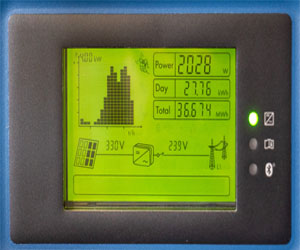
Solar power, a sustainable and environmentally friendly energy source, is a subject of growing interest among beginners looking to reduce their carbon footprint and energy bills. If you're new to the world of solar power, this article will serve as a comprehensive guide to help you understand the basics and get started on your journey toward harnessing the sun's energy.
Understanding Solar Power
At its core, solar power relies on the photovoltaic effect, where solar panels capture sunlight and convert it into electricity. Here's a simplified overview of how it works:
Sunlight Capture: Solar panels, typically mounted on rooftops, capture sunlight using photovoltaic cells. These cells are made of semiconductor materials, usually silicon.
Electricity Generation: When sunlight hits the cells, it excites electrons in the semiconductor material, causing them to move and generate an electric current. This current is direct current (DC).
Inverter Conversion: Most of our electrical devices and appliances operate on alternating current (AC). To make the electricity compatible, an inverter is used to convert the DC into AC.
Energy Use Or Storage: The converted electricity can either be used immediately in your home or stored in batteries for later use, ensuring a constant supply of power even when the sun isn't shining.
Advantages Of Solar Power For Beginners
Environmental Benefits: Solar power is a clean and renewable energy source. It produces no greenhouse gas emissions, reducing your carbon footprint and contributing to a healthier planet.
Lower Energy Bills: By generating your electricity, you'll rely less on traditional utility providers, leading to significant savings on your energy bills.
Energy Independence: Solar panels provide a degree of energy independence. You're less vulnerable to power outages and price fluctuations from utility companies.
Property Value: Homes with solar panels are often more appealing to buyers, potentially increasing the value of your property.
Government Incentives: Many governments offer financial incentives, tax credits, and rebates to promote solar adoption, making it a more affordable option.
Steps To Get Started
Energy Audit: Begin by conducting an energy audit of your home to assess your current energy consumption. This will help you determine the size and type of solar system you need.
Find A Reputable Solar Installer: Look for a reputable solar installation company to assess your property and design a solar system that suits your energy needs.
Permits And Approvals: Your solar installation provider will help you obtain the necessary permits and approvals to ensure your system complies with local regulations.
Installation: Once permits are secured, your solar panels and associated equipment will be installed on your property.
Connection To The Grid: Your solar system may be connected to the energy grid, allowing you to sell excess energy back to the grid or draw power from it when your system isn't producing enough electricity.
Monitoring And Maintenance: After installation, your solar system will be monitored for optimal performance. Routine maintenance is essential to keep it operating efficiently.
Solar power is an accessible and eco-conscious choice for beginners looking to reduce their environmental impact and energy expenses. It not only benefits the environment but also your finances. As you embark on your solar power journey, consult with experts, take advantage of government incentives, and enjoy the satisfaction of contributing to a cleaner, more sustainable future. Going solar is not just a wise decision; it's a step toward a brighter tomorrow.

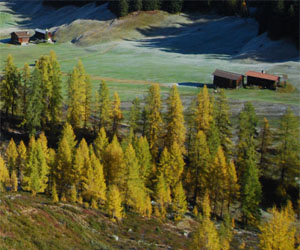
Understanding And Mitigating Our Footprint
 2. Habitat Destruction: Human activities, including urbanization, agriculture, and industrial development, have led to the destruction of natural habitats. This results in the loss of biodiversity, as many plant and animal species face extinction due to habitat loss and fragmentation. Preserving natural habitats is essential to maintaining the Earth's rich biodiversity.
2. Habitat Destruction: Human activities, including urbanization, agriculture, and industrial development, have led to the destruction of natural habitats. This results in the loss of biodiversity, as many plant and animal species face extinction due to habitat loss and fragmentation. Preserving natural habitats is essential to maintaining the Earth's rich biodiversity.
3. Pollution: Pollution takes various forms, including air pollution, water pollution, and soil contamination. Pollutants emitted from industrial, agricultural, and residential sources can harm both the environment and human health. Air pollution leads to respiratory problems, while water pollution impacts aquatic ecosystems and can contaminate drinking water sources.
4. Resource Depletion: The overexploitation of natural resources, such as freshwater, minerals, and forests, depletes these finite resources at an unsustainable rate. This not only threatens the availability of essential resources but also contributes to habitat destruction and environmental degradation.
5. Plastic Pollution: The excessive use and improper disposal of plastic products have resulted in a global crisis of plastic pollution. Plastics take hundreds of years to decompose, and their accumulation in oceans, waterways, and ecosystems poses significant risks to wildlife and ecosystems.
6. Deforestation: Deforestation, primarily driven by agriculture and logging, has far-reaching consequences. It contributes to habitat loss, reduces carbon sequestration, and disrupts global climate patterns. It also affects indigenous communities that rely on forests for their livelihoods.
The Liberating Power Of Minimalism
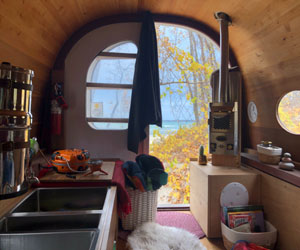 The modern consumerist culture often bombards us with messages that more is better, and that happiness can be found through the acquisition of material possessions. However, this mindset can lead to cluttered lives, financial strain, and a sense of emptiness. "Freedom from excess" challenges this narrative, offering a different perspective on what constitutes a fulfilling life.
The modern consumerist culture often bombards us with messages that more is better, and that happiness can be found through the acquisition of material possessions. However, this mindset can lead to cluttered lives, financial strain, and a sense of emptiness. "Freedom from excess" challenges this narrative, offering a different perspective on what constitutes a fulfilling life.
Here are some key aspects of this philosophy:
Minimalist Living: At its core, "freedom from excess" aligns with minimalist living. It encourages individuals to declutter their living spaces, reduce their material possessions, and focus on the essentials that truly add value to their lives. Minimalist living emphasizes quality over quantity and promotes the idea that less can be more.
Financial Freedom: A focus on "freedom from excess" includes mindful spending and the avoidance of unnecessary debt. By living within one's means and reducing unnecessary expenses, individuals can experience financial freedom, reduce stress, and achieve greater control over their financial future.
Environmental Responsibility: Excessive consumption has a substantial impact on the environment. Minimalist living reduces waste, conserves resources, and lessens the carbon footprint. It encourages eco-friendly practices such as reusing, recycling, and reducing energy and water consumption.
The Art Of Seed Selection
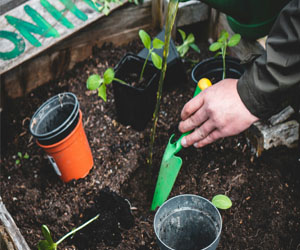 Consider Your Garden's Goals
Consider Your Garden's Goals
Before you dive into the world of seed catalogs, take a moment to consider the goals for your garden. Are you interested in growing vegetables, herbs, flowers, or a combination of these? Are you aiming for a bountiful harvest, stunning aesthetics, or both? Understanding your garden's purpose will help you make the right seed selections.
Open-Pollinated vs. Hybrid Seeds
One of the primary choices you'll encounter is between open-pollinated and hybrid seeds. Open-pollinated seeds are the result of natural pollination and breeding. They tend to be more stable and reproduce true to type, meaning that the offspring will resemble the parent plant.
On the other hand, hybrid seeds are the result of controlled cross-breeding between two different parent plants. They often exhibit desirable traits like disease resistance or improved yield. However, saving seeds from hybrid plants may not produce consistent results in the next generation.
Choosing Varieties
When selecting seeds, you'll have numerous varieties to choose from. Consider factors like:
Climate Suitability: Choose varieties that are well-suited to your local climate and growing conditions.
Growth Habit: Some plants have determinate growth (bushy and compact) while others have indeterminate growth (vining). Select according to your space and support availability.
Days To Maturity: Different varieties have varying maturity periods. Some mature quickly, while others take longer. Plan your garden timeline accordingly.
Disease Resistance: Look for varieties that are resistant to common pests and diseases in your area to reduce the need for chemical interventions.
Flavor And Appearance: Consider the taste and appearance of vegetables and fruits. After all, the end product should meet your culinary and aesthetic preferences.
Quality Matters
It's essential to purchase seeds from reputable sources. Well-established seed companies offer seeds that are more likely to be true to type, have high germination rates, and have been stored properly.

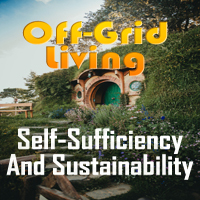




Building A Brighter Future Together
 Environmental Sustainability: At the heart of sustainable communities is a commitment to reducing their environmental footprint. This involves adopting eco-friendly construction and infrastructure, implementing energy-efficient technologies, reducing waste, and practicing sustainable land use.
Environmental Sustainability: At the heart of sustainable communities is a commitment to reducing their environmental footprint. This involves adopting eco-friendly construction and infrastructure, implementing energy-efficient technologies, reducing waste, and practicing sustainable land use.
Community Engagement: Sustainable communities prioritize community engagement and participation in decision-making processes. Residents actively contribute to the development and management of their community, fostering a sense of ownership and responsibility.
Social Equity: Social equity is a key component of sustainability. Sustainable communities aim to be inclusive and equitable, promoting equal access to resources, opportunities, and services for all residents, regardless of background or socioeconomic status.
Economic Resilience: Building economic resilience is crucial. Sustainable communities often emphasize local economies, supporting small businesses and initiatives that create jobs and enhance economic stability.
Eco-Friendly Transportation: Sustainable communities prioritize alternative transportation options such as cycling, walking, and public transit to reduce dependence on fossil fuels and lower carbon emissions.
Energy Efficiency: Implementing energy-efficient technologies and renewable energy sources, such as solar panels and wind turbines, helps reduce energy consumption and dependence on non-renewable resources.
Benefits Of Sustainable Communities:
Reduced Environmental Impact: Sustainable communities actively reduce their environmental impact by promoting eco-conscious practices, reducing energy consumption, and minimizing waste.
Improved Quality Of Life: Residents of sustainable communities often report an improved quality of life, with access to green spaces, clean air, and a strong sense of community.
Making The Most Of Your Compact Living
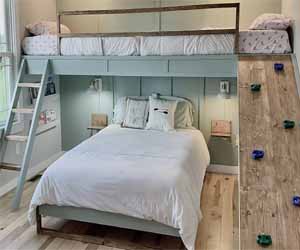 The Benefits Of Small Space Living
The Benefits Of Small Space Living
Before delving into the intricacies of small space planning, it's essential to understand the advantages of choosing a compact living arrangement.
Simplicity: Small homes encourage a minimalist lifestyle, reducing clutter and allowing you to focus on what truly matters.
Eco-Friendly: Smaller homes typically have a smaller environmental impact, as they consume fewer resources for heating, cooling, and maintenance.
Cost-Effective: Compact spaces are generally more affordable, both in terms of initial purchase or rent and ongoing utility costs.
Less Maintenance: With less square footage, there's less space to clean and maintain, freeing up your time for other pursuits.
The Key To Small Space Success: Planning
Small space planning is an art, and it involves thoughtful consideration of every square inch. Here are some crucial factors to keep in mind when planning for your compact living space:
Multi-Functional Furniture: Invest in furniture that serves multiple purposes. For example, a sofa that doubles as a guest bed or a dining table with storage space can help maximize your limited square footage.
Vertical Storage: Make use of vertical space for storage. Wall-mounted shelves, hooks, and cabinets can help keep your belongings organized without encroaching on your floor space.
De-Clutter: Embrace the mantra of minimalism and declutter regularly. If you haven't used an item in the past year, consider whether you truly need it. Donating or selling items that no longer serve you is a great way to keep your small space tidy.
Light Colors: Lighter paint and decor colors can make a space feel larger and more open. Consider using a neutral palette to create the illusion of spaciousness.